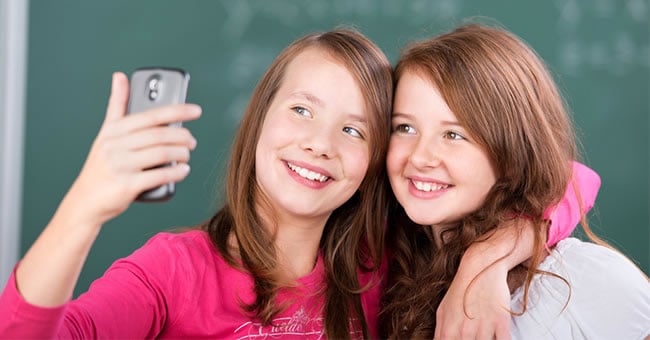
Do you use cameras and video cameras to facilitate learning and support family engagement in your elementary classroom? Whether you use your smartphone's camera or have a separate digital camera/video camera to use, incorporating cameras and video cameras into your lesson plans and classroom environment can open up a variety of learning opportunities and family engagement possibilities:
-
Document the school year by photographing and filming classroom activities and events.Whether it's you or a student behind the camera, documenting the school year can make you a more intentional teacher and help the children in your class remember what they learn throughout the year. Field trips, assemblies, open house activities, group projects, birthday celebrations, science experiments, and classroom plays or recitals are just a few examples of activities and events you can document each year.
-
Use cameras/video cameras to incorporate technology in fun, educational ways.Children grow up using technology, so they'll naturally be drawn to activities and lessons that incorporate different aspects of technology. Here are five fun and educational ideas for using cameras and video cameras that the children in your class will enjoy:
- Instead of (or in addition to) children writing down their thoughts about classroom subjects, interview students about different topics throughout the school year. You can turn a closet or a quiet area of the classroom into a makeshift video studio.
- Have children use a camera and/or video camera to observe and record plant growth, weather and climate, or any other science projects that can be tracked over time.
- Encourage children to create written or animated stories about the different pictures and videos they take of the classroom and school environment. Children can also create story boards with images or record their plays and presentations.
- Have children create a weekly or monthly newscast that incorporates what they've learned in class and the different activities they completed during the week/month. This is a great way for students to work together while creating something that will help them recall and memorize information.
- Start a blog, wiki, or Facebook page for your classroom. Children can then post and share the pictures and videos they take during class to whichever platform you choose. Asking children to post assignments and projects on a class blog or social media page will help them learn how to use technology in an educational, safe way.
-
Keep parents informed of the everyday happenings in class by sharing photos and videos.Create a slideshow or presentation of the photographs and videos taken of different classroom events and activities to share with parents during parent-teacher conferences or open house events. Giving parents access to the class blog or Facebook page so that they can view the posted pictures and videos is also a great way to keep parents engaged and informed of what is happening in the classroom.
-
Create an end-of-school video or slideshow with the videos and/or photographs you or your students have taken throughout the school year.An end-of-school video or slideshow can be an effective way to reflect and review on what students learned during the school year. It can also help you assess what worked and what didn't work for this group of students, which will ultimately help you plan and prepare for the next school year. Be sure to share the video or slideshow with parents or post it to the class blog or Facebook page for both parents and students to view.
-
Share pictures with your school's administration, the local newspaper, or with your school's yearbook committee/advisor.Sharing pictures of class activities and events may help your students be recognized for what they're learning in class. Being included in the school yearbook or the local newspaper can also help children develop a positive mindset towards learning and education. Sharing pictures with the administration of your school is another great way to let others know what children are learning in class and to show children that learning is important.
Be aware that encouraging children to use cameras and video cameras in class requires monitoring. You should immediately establish rules about how children can use cameras and video cameras in the classroom. If you choose to use cameras and video cameras in your classroom, make sure you tell parents and/or get their written permission for the child to be included in the pictures or videos. If your school's administration or a few of your students' parents are concerned about privacy, use blogs and social media platforms that enable you to restrict who sees the content.
